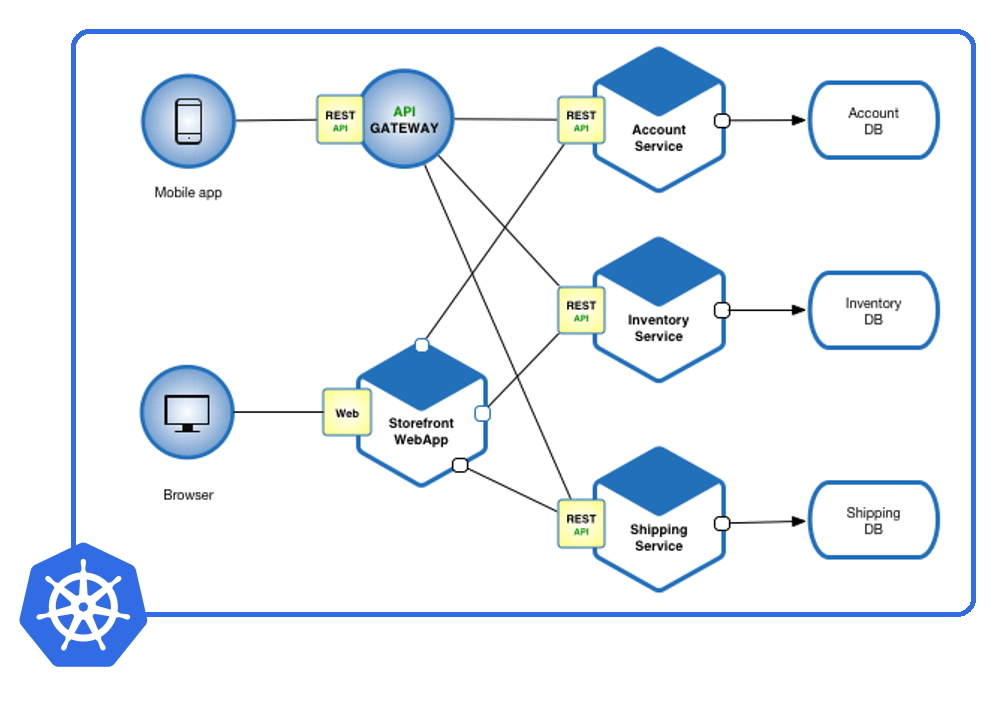Building a Secure & Scalable Microservices Authorisation Architecture with Kubernetes
Microservices architecture has become the go-to choice for modern companies, offering unparalleled flexibility and scalability, especially in cloud-native environments. However, this architectural shift introduces new and unique security challenges, with authorisation standing out as a paramount concern. Unlike traditional monolithic systems, where authorisation was typically managed through a single-entry point, microservices demand a more decentralised approach. Learn the best practices on how you can design a robust and scalable authorisation framework within your microservices architecture, with a focus on cloud-native and Kubernetes.

The Complex Landscape of Microservices Authorisation
The rise of microservices has fundamentally transformed software development, breaking applications into smaller, independent services that can be developed, deployed, and scaled autonomously, often within Kubernetes clusters.
In a typical monolithic system, authorisation is often concentrated at a single gateway or access point. However, in the microservices world, each microservice boasts its own API and necessitates its own unique authorisation checks. This decentralised approach poses challenges in maintaining a consistent and robust security framework across the entire microservices architecture.
To address these challenges, it’s crucial to implement authorisation practices that are secure, scalable, adaptable, and manageable. Below we have compiled seven best practices that will help you achieve this balance in your microservices ecosystem.
1. Decouple Authorisation Logic and Policy
In a microservices ecosystem, it’s imperative to separate authorisation logic and policy from the individual microservices. This approach allows you to centralise your authorisation checks, making it easier to manage, adapt, and enhance security without overburdening your microservices.
Tooling:
- Open Policy Agent (OPA): OPA is a policy engine that allows you to decouple authorisation logic from your microservices. It can be seamlessly integrated into your Kubernetes environment, providing detailed control over authorisation policies.
2. Use Sidecar Enforcement for Security, Performance, and Availability
Employing sidecar containers for authorisation checks enhances performance, availability, and security within Kubernetes clusters. By running these containers alongside your microservices, you reduce the need for additional network hops, ensure authorisation continuity during server downtimes, and isolate authorisation logic from the microservices themselves, all while taking advantage of the cloud-native environment.
Tooling:
- Istio: A popular service mesh for Kubernetes which supports sidecar proxy containers. It provides security, performance, and availability benefits by managing authorisation and traffic control between services.
3. Enforce JSON Web Token (JWT) Validation
Using JWTs as a means of authorisation enhances security, flexibility, and compatibility. Validating JWTs before a request reaches the microservice can ensure secure access while accommodating a variety of authorisation policies and technologies.
Tooling:
- Keycloak: An identity and access management solution that can handle JWT validation in Kubernetes. It integrates with various identity providers and secures your microservices effectively.
4. Use RBAC and ABAC to Control End-User Actions
Role-Based Access Control (RBAC) and Attribute-Based Access Control (ABAC) are powerful tools for controlling and managing authorisation in your microservices. These models allow you to assign roles and define permissions or craft fine-grained policies based on attributes, ensuring precise control over access rights.
Tooling:
- Kubernetes RBAC: Kubernetes itself provides Role-Based Access Control (RBAC) for defining fine-grained permissions within your cluster. Combined with custom ABAC rules, it offers powerful access control.
5. Place a PEP Around Every Service, Ingress, and Egress
By implementing Policy Enforcement Points (PEPs) around each microservice, ingress point, and egress point, you can ensure that all requests undergo authorisation checks before they interact with the microservices or exit the system.
6. Support Strong, Provably Secure Workload Identity and mTLS
Mutual TLS (mTLS) is a cornerstone of secure communication between microservices, offering protection against various security threats. Leveraging a service mesh to implement mTLS helps establish robust and reliable workload identity for your services.
Tooling:
- Linkerd: Another service mesh designed to secure communication between services. It supports mutual TLS (mTLS) and workload identity, bolstering the security of your microservices.
7. Declare and Enforce Connectivity Policies
In a microservices architecture, precise control over which services can connect with others is essential for reducing the risk of unauthorised access and minimising the potential attack surface. Service meshes are invaluable tools for defining and enforcing these policies.
Summary
Implementing a secure and scalable authorisation framework in your microservices architecture is no small feat, but it’s a mission-critical aspect of ensuring your system’s resilience and adaptability. By adhering to these best practices, you can confidently navigate the complex landscape of microservices security and build an authorisation architecture that can evolve with your application’s ever-changing needs.
Ready to elevate your microservices security to the next level? Don’t let the complexity of authorisation frameworks slow you down. Our team of experts is here to guide you through every step of the process, ensuring your system is not only secure and scalable but also perfectly tailored to meet your business needs.
Contact us today to explore how we can help you build a resilient and adaptable authorisation architecture that grows with your business.
